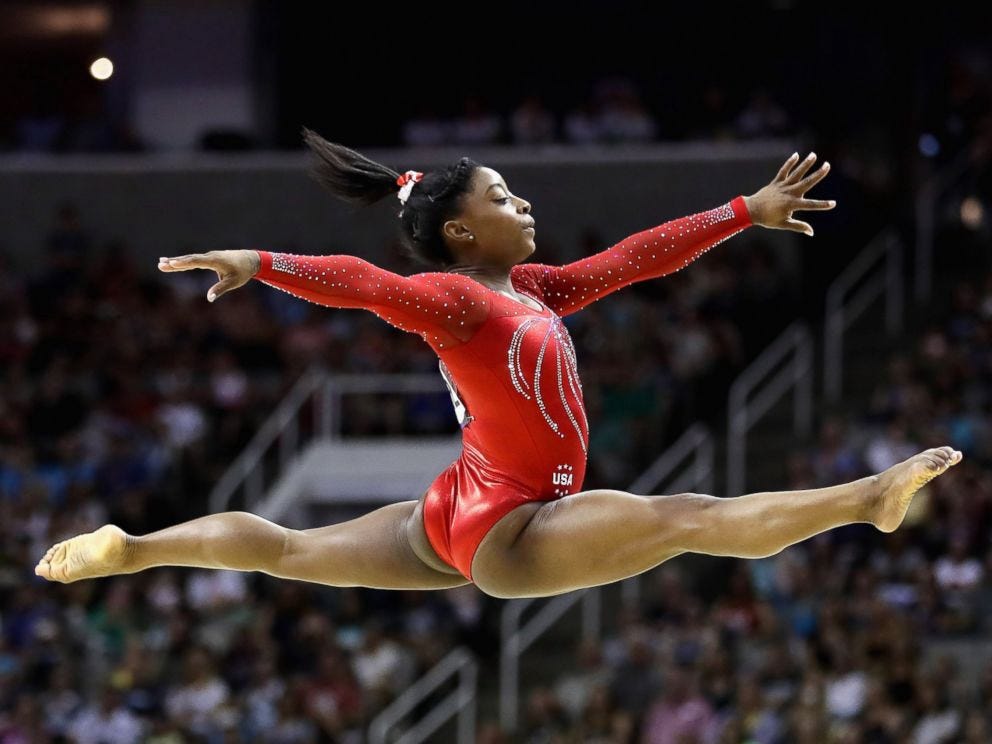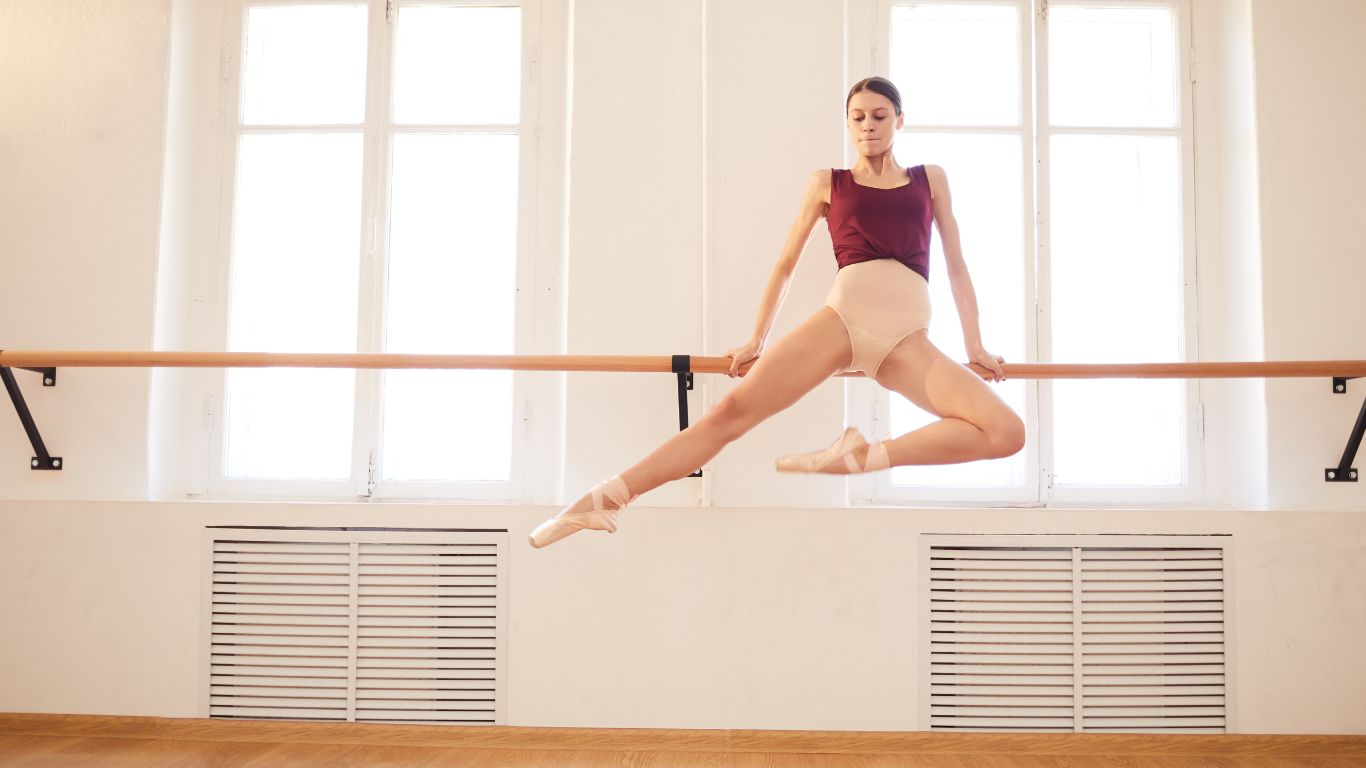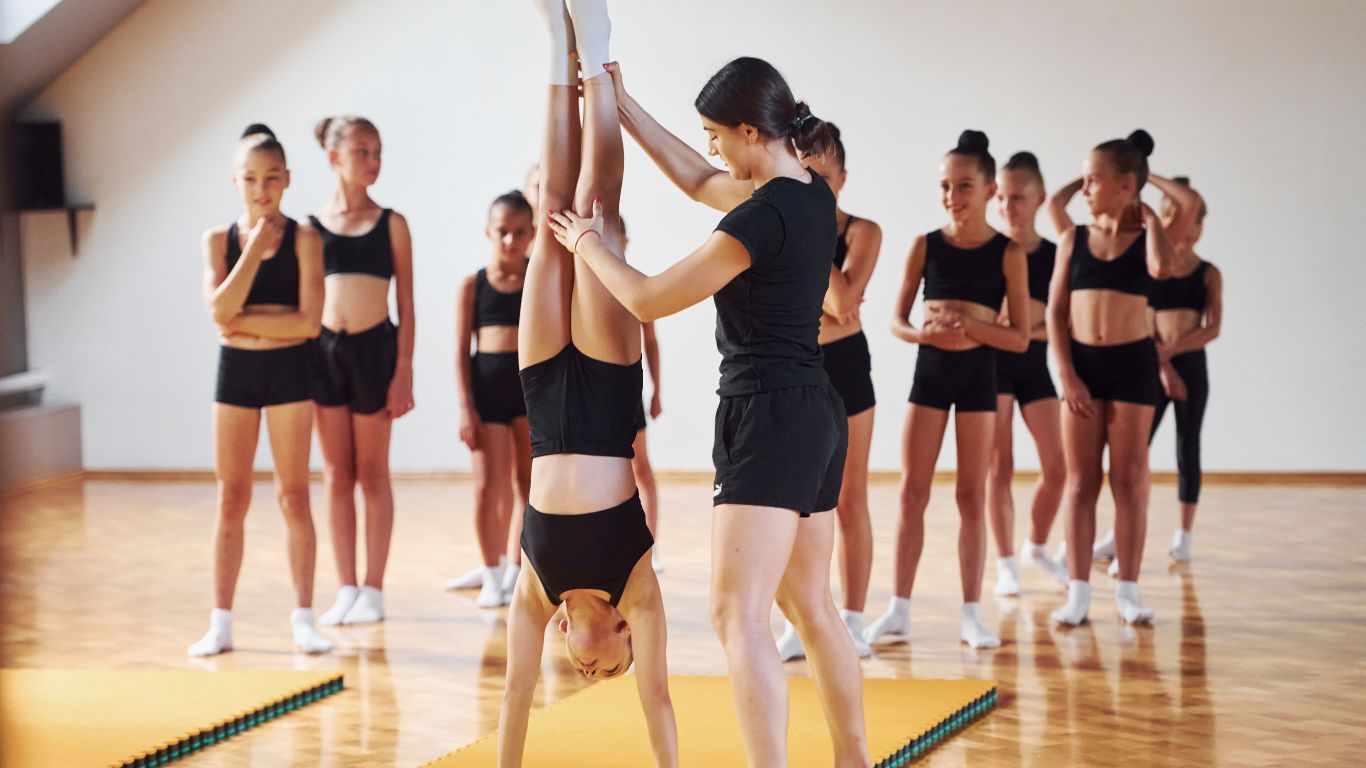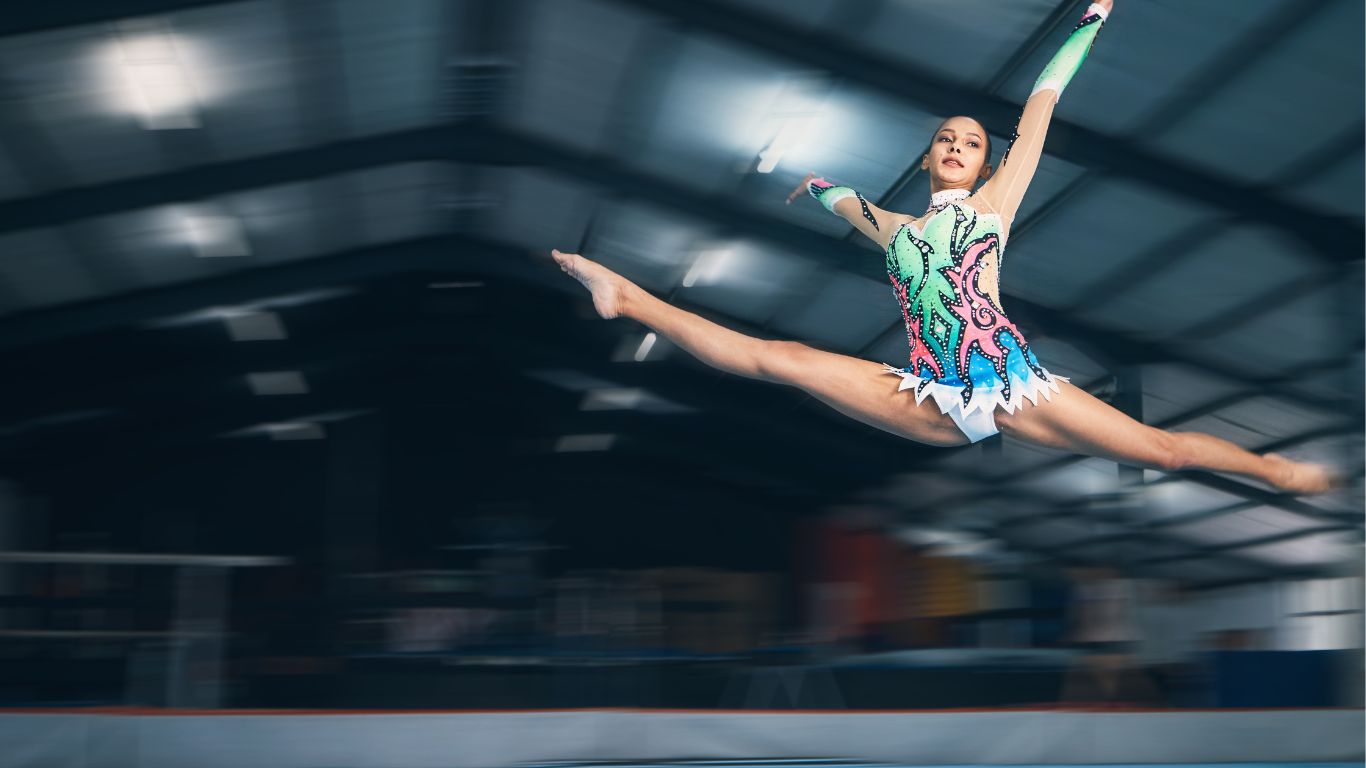A kip in gymnastics is a basic skill where a gymnast swings from a hanging position to a support position on the bar using the momentum generated by the swing. The kip is an essential building block for more advanced skills and routines in gymnastics.
Gymnastics is a sport that requires strength, flexibility, and coordination. The kip is a fundamental skill learned by gymnasts as they progress in their training. It involves a dynamic movement from hanging to support, helping to develop upper body strength and control.
Understanding the kip and its mechanics is important for gymnasts at all levels, as it sets the foundation for mastering bar routines and other advanced skills. We will explore the kip in gymnastics, its significance, and how it contributes to a gymnast’s overall performance.

The Power Of The Kip
Building Upper Body Strength
Performing kips in gymnastics exercises the upper body including the arms, shoulders, and back. This movement strengthens the muscles responsible for lifting and holding the body weight, aiding in enhancing overall upper body strength.
Improving Coordination And Flexibility
Kips in gymnastics require precise coordination and timing, improving spatial awareness and neuromuscular control. The dynamic nature of the kip also promotes flexibility by engaging the core and stretching the muscles in the arms and back.

The Basics Of The Kip
The Basics of the Kip in gymnastics is a fundamental skill that allows gymnasts to transition from a hanging position on the uneven bars to an inverted position. It requires a combination of strength, coordination, and technique. Understanding the movement and the key muscles involved is essential for mastering the kip and progressing in gymnastics. Let’s delve into the basics of the kip in gymnastics.
Understanding The Movement
The kip in gymnastics involves a dynamic movement that begins with a hang on the uneven bars, followed by a powerful swing and hip thrust to propel the body upward and transition to the inverted position. The momentum generated from the swing is crucial for successfully executing the kip. Proper body alignment and precise timing are also vital for the seamless performance of the kip. This movement requires coordination of the entire body, from the legs and core to the arms and shoulders.
The Key Muscles Involved
The kip primarily engages several key muscle groups, including the latissimus dorsi (back muscles), abdominals, and hip flexors. These muscles work in synergy to generate the power and momentum needed to lift the body and transition into the inverted position during the kip. Additionally, the shoulder muscles play a crucial role in stabilizing and controlling the movement throughout the kip. Developing strength and flexibility in these muscle groups is essential for mastering the kip and advancing in gymnastics.
Mastering The Kip Techniques
The kip is a fundamental skill in gymnastics that allows gymnasts to transition from hanging on the bar to performing powerful swings. Mastering the kip technique is essential for gymnasts to progress to more advanced skills on bars. In this section, we will break down the key components of executing a perfect kip, starting with gripping the bar.
Gripping The Bar
Properly gripping the bar is the first step in mastering the kip. The grip should be firm yet comfortable, with the hands slightly wider than shoulder-width apart. Avoid gripping the bar too tightly as it may hinder movement and cause unnecessary strain. Beginners might find it helpful to use chalk or grips to improve their grip and prevent slipping.
Initiating The Swing
Once you have a secure grip on the bar, the next step is to initiate the swing. Engage your core and use your lats to pull your body up. Aim to perform a smooth and controlled motion, avoiding any jerky movements. Starting with a small swing, gradually build up momentum as you get more comfortable.
Timing The Hip Thrust
The hip thrust is a crucial part of the kip. As you swing forward, your legs should rise in front of your body, creating an upward momentum. At the highest point of your swing, initiate a powerful hip thrust to elevate your body upward. This movement is key in transitioning into the next skill or maneuver.
By mastering these three key components of the kip technique – gripping the bar, initiating the swing, and timing the hip thrust – you’ll be well on your way to performing seamless and powerful kips in gymnastics.
Common Mistakes And How To Overcome Them
When it comes to performing a kip in gymnastics, there are some common mistakes that many athletes encounter. By understanding these mistakes and learning how to overcome them, gymnasts can improve their form and execution. In this section, we will discuss three key areas where mistakes can occur: lack of momentum, weak core engagement, and inconsistent bar contact.
Lack Of Momentum
One of the most prevalent mistakes in performing a kip is a lack of momentum. Without sufficient momentum, gymnasts may struggle to generate the energy needed to transition from a hanging position to a powerful swing upwards. To overcome this mistake, gymnasts should focus on building momentum before attempting the kip. Here are a few strategies:
- Start with a small swing back and forth to build up the momentum gradually.
- Extend the legs fully during the backward swing to increase the range of motion.
- Utilize the entire body to generate power, not just the arms.
Weak Core Engagement
Another mistake that can hinder a successful kip is weak core engagement. Without a strong core, gymnasts may struggle to maintain control and stability during the movement. Here are a few tips to overcome weak core engagement:
- Practice regular core-strengthening exercises, such as planks and V-ups.
- Focus on tightening your abdominal muscles throughout the kip.
- Visualize pulling your belly button in toward your spine to engage your core.
Inconsistent Bar Contact
Lastly, inconsistent bar contact is a common mistake that can disrupt the flow of a kip. When contact with the bar is inconsistent, gymnasts may lose momentum and struggle to execute the movement smoothly. Overcome this mistake with the following steps:
- Ensure proper hand placement on the bar, with palms facing away from the body.
- Maintain a secure grip on the bar throughout the entire kip.
- Focus on making contact with the bar at the same spot consistently.
By addressing these common mistakes and implementing the suggested strategies, gymnasts can enhance their kip performance. Keep practicing and refining your technique, and soon you’ll be executing flawless kips with ease.
Progressions And Variations
Gymnastics is an incredibly dynamic and captivating sport that requires strength, flexibility, and precision. One of the fundamental skills in gymnastics is the kip – a technique that allows gymnasts to smoothly transition from a hanging position to an upright position on the bars. Understanding the progressions and variations of the kip is essential for gymnasts looking to improve their routines and skills.
Half Kip To Kip Transition
The half kip to kip transition is a significant milestone in a gymnast’s journey towards mastering the kip on bars. It involves the athlete swinging forward and placing their feet on the bar, followed by using their upper body strength to push their body upward and rotate around the bar, eventually reaching the upright position.
This progression helps gymnasts build crucial coordination, strength, and timing necessary for successfully executing the full kip. Consistent practice and dedication to perfecting the half kip to kip transition will eventually lead to a more polished and fluid movement on the bars.
Kip On Uneven Bars
The kip on uneven bars requires additional skills and technique due to the nature of the apparatus. As gymnasts perform the kip on uneven bars, they face the challenge of varying bar heights and different hand placements.
Gymnasts must engage their core muscles and generate powerful momentum as they swing backward and upward, smoothly transferring their body weight from one bar to the other. This skill showcases a gymnast’s ability to adapt and excel on different apparatus, adding variety and excitement to their routine.
Kip Cast Handstand
The kip cast handstand is an advanced variation of the kip that demonstrates exceptional strength and control. To execute this move, gymnasts start with a kip on bars and continue their upward motion to reach a handstand position without their feet touching the ground in between.
This challenging variation tests a gymnast’s upper body strength, coordination, and balance. The kip cast handstand is often incorporated into high-level routines, impressing judges and spectators with its grace and athleticism.
In conclusion, understanding the progressions and variations of the kip in gymnastics is key to becoming a skilled gymnast. The half kip to kip transition, kip on uneven bars, and kip cast handstand are important steps towards mastering this foundational skill. Consistent practice and dedication will enable gymnasts to hone their technique and ultimately perform fluid, powerful kips.

Frequently Asked Questions
What Is A Kip In Gymnastics?
A kip in gymnastics is a skill where the gymnast goes from a hanging position to a support position on the high bar. It requires upper body strength and coordination to swing and transfer the momentum into lifting the body upwards.
How Do You Do A Kip In Gymnastics?
To do a kip in gymnastics, start by hanging from the high bar with your legs bent and your body slightly arched. Then, use a swinging motion to gain momentum and shift your weight forward. As you swing backward, push down on the bar and lift your legs, bringing your body up into a support position.
What Muscles Does A Kip In Gymnastics Work?
A kip in gymnastics primarily works the muscles of the upper body, including the shoulders, arms, and back. It also engages the core muscles for stability and control. Regularly practicing the kip can help to strengthen and tone these muscle groups, improving overall gymnastic performance.
How Can I Improve My Kip In Gymnastics?
To improve your kip in gymnastics, it’s important to work on upper body strength and flexibility. Exercises like pull-ups, push-ups, and planks can help build the necessary muscles. Additionally, practicing the kip with proper technique and gradually increasing the level of difficulty will help you progress and achieve a stronger and more controlled kip.
Conclusion
In gymnastics, a kip is a fundamental move that requires strength, coordination, and technique. It is crucial for mastering more advanced skills on the bars. By understanding the mechanics and practicing proper form, gymnasts can unlock the potential of the kip to enhance their routines.
With patience and dedication, the kip can be a game-changer in the world of gymnastics, setting the stage for even greater achievements. Mastering this skill opens the doors to a world of possibilities on the gymnastics floor. Develop your kip, and let your gymnastics journey soar to new heights.










После тестирования различных моделей мы выбрали [url=https://myapplestory.ru/]лучшая копия беспроводных наушников[/url].